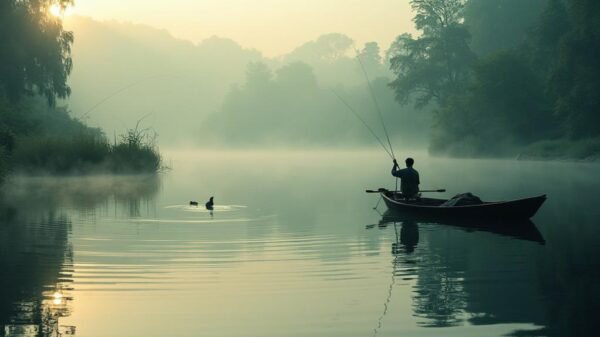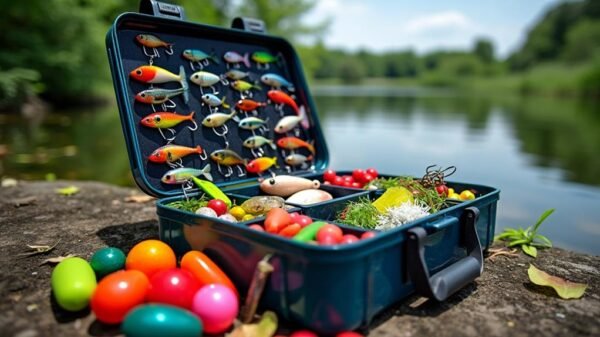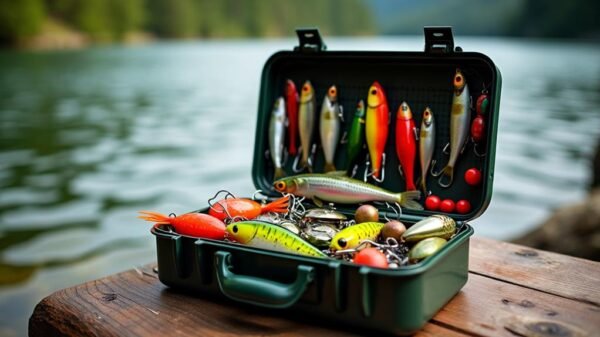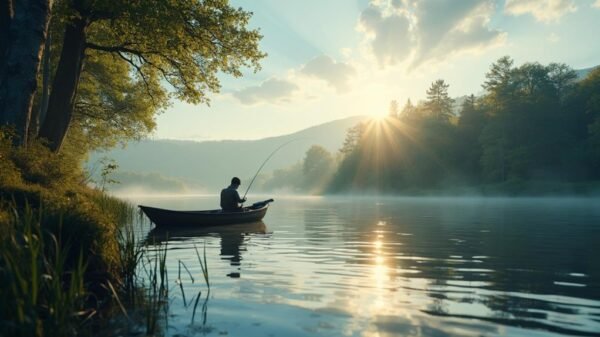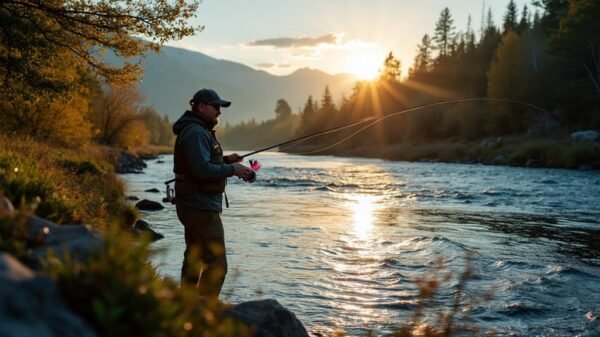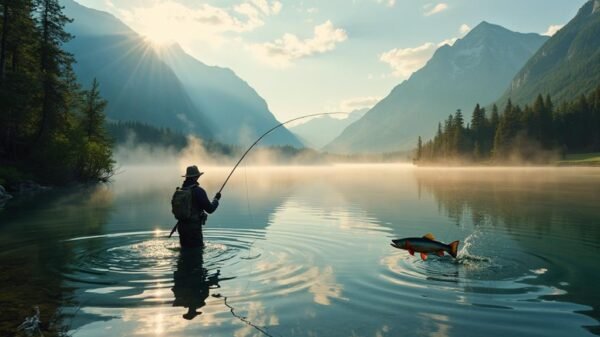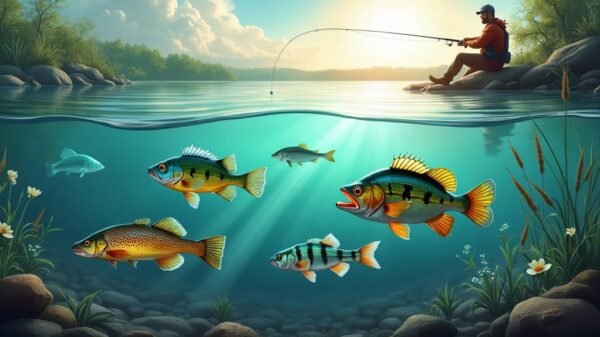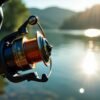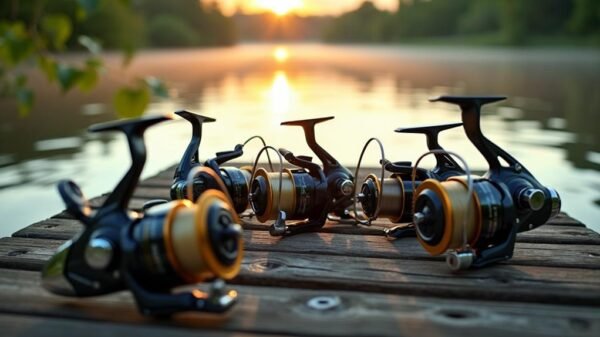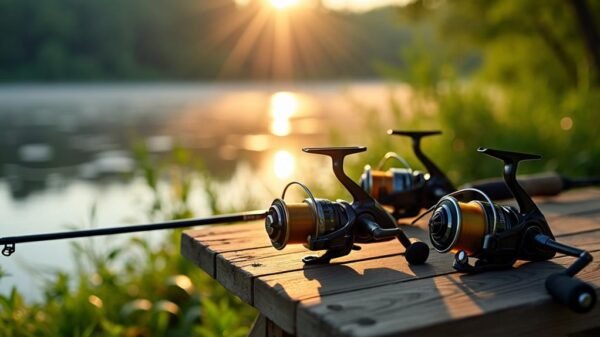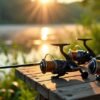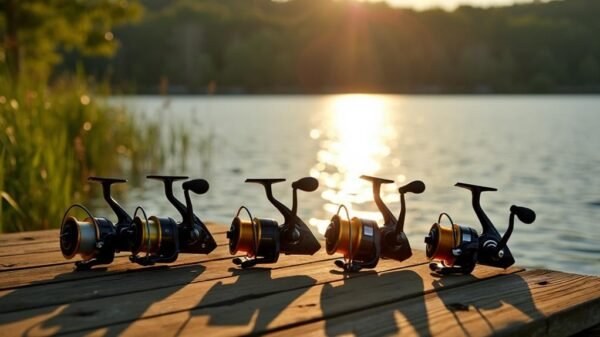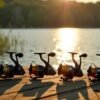For successful trout adventures, your tackle box should include necessary gear to keep you organized and ready. Start with quality lures like Panther Martin spinners and Rapala crankbaits, as they attract trout effectively. Don't forget a dependable fishing line—monofilament floats well, while fluorocarbon is nearly invisible underwater. Choose a tackle box with ample compartments for easy access to gear, and make certain it's portable with comfortable handles. Organize your tackle into categories and label compartments for quick retrieval. Staying prepared will enrich your fishing experience, and there's plenty more to discover on how to make sure you're fully equipped.
Understanding Trout Behavior
When you venture out to the river or lake, understanding trout behavior can significantly impact your fishing success. Trout are sensitive fish, and their habits fluctuate with the changing seasons. During the summer months, they often remain near the surface, especially during dawn and dusk. However, when the sun is at its peak, they dive deeper to escape the heat. Recognizing this pattern helps you select the optimal time for fishing. Additionally, trout are frequently located in freshwater bodies like lakes and ponds, where diverse fishing opportunities arise due to the variety of underwater structures.
Trout favor structure. They typically inhabit areas near boulders, submerged trees, or undercut riverbanks. These locations offer shelter and a strategic vantage point to ambush their prey. Therefore, when scouting for the ideal fishing location, seek out these features!
Furthermore, trout are cautious of shadows and sudden movements. If possible, maintain a low profile and refrain from splashing in the water. Utilizing lighter fishing line, such as those from brands like Berkley or Stren, can yield better results, as trout are easily frightened by heavier tackle.
Understanding their feeding habits is crucial as well. They predominantly consume insects and smaller baitfish, so matching your lure or bait to the current food source can enhance your fishing success. With this knowledge, you're well-prepared to maximize your trout fishing adventures.
Choosing the Right Tackle Box

Selecting the right tackle box is crucial for organizing fishing gear and ensuring quick access to essential items. With numerous options available, it's important to choose one that aligns with your fishing approach. Consider your fishing habits—are you a casual angler or an experienced fisherman? If you frequently hit the water, a larger tackle box may be ideal, providing ample space for vital supplies. Additionally, think about including the KastKing Fishing Tools Combo, which features robust and corrosion-resistant tools suitable for both freshwater and saltwater fishing.
Evaluate the storage compartments as well. A tackle box with adjustable dividers allows for customization to accommodate lures, hooks, and other equipment. This adaptability ensures that your gear remains organized and readily accessible when you're ready to fish.
Portability is also an important aspect. A tackle box equipped with a comfortable handle or backpack straps makes it easier to reach those secluded fishing locations without feeling burdened.
Essential Lures for Trout

To ensure a successful trout fishing trip, using the right lures can make all the difference. When you hit the water, consider packing Panther Martin spinners, a favorite among trout anglers. Their flashy blades mimic the movement of baitfish, drawing trout in with their irresistible sparkle. Integrating a Storm Wildeye multi-jointed swimbait can boost your chances, as this lure offers a realistic swimming action that can effectively attract trout.
Next, you can't go wrong with Johnson spoons. These versatile lures come in various sizes and colors, so you can match the local forage. Try casting them at different depths; trout often lurk at various levels, especially in deeper waters.
Don't forget about Rapala crankbaits! These lures can add a bit of action to your setup. Choose ones that dive to the appropriate depth, and give them a steady retrieve.
Best Fishing Lines for Trout

Choosing the right fishing line can greatly influence your success in catching trout. Various options exist, each with distinct benefits. Monofilament line is popular among anglers for its user-friendliness and flexibility. It's ideal for novices, as it offers forgiveness and floats easily, making it suitable for topwater lures. Additionally, consider pairing your line with high-quality lures like the PLUSINNO Fishing Lures Baits Tackle to enhance your effectiveness on the water.
If you seek heightened sensitivity, fluorocarbon might be the way to go. This line is nearly invisible in water, potentially leading to more bites. It sinks, making it effective for deeper presentations. However, its stiffness requires careful handling.
Alternatively, braided line presents another viable choice. Known for its strength and small diameter, it allows for more line on your reel. Keep in mind, though, that it's more visible underwater, so using a fluorocarbon leader is advisable when fishing for wary trout.
Ultimately, pick a line that complements your fishing style and the specific conditions you anticipate. Experiment with various types to find what works best for you. Embrace the adventure of fishing, and tight lines!
Organizing Your Tackle Box

A well-organized tackle box is essential for any trout angler aiming to maximize their time on the water. When fishing, every second matters; thus, having your equipment sorted allows you to concentrate on casting instead of searching. Recognizing the various types of freshwater fishing can assist you in identifying the necessary equipment for your trout excursions, whether you're at a local lake or flowing river. Here are three crucial tips to effectively organize your tackle box:
- Group Your Equipment: Divide your tackle into specific categories such as lures, hooks, and bobbers. Utilize small containers or bags to keep each group together. This approach prevents wasting time rummaging through a chaotic assortment.
- Tag Everything: Attach labels to each compartment. Opt for straightforward names like "spinners" or "soft plastics." This makes it simple to grab what you need quickly. No more uncertainty!
- Update Your Inventory: As seasons shift, so do the most effective baits for trout. Regularly inspect your tackle box and replace outdated or unused items. Keeping your supplies current ensures you're always prepared for that next big catch.
With a bit of effort, you can transform your tackle box into a streamlined, efficient resource that enhances your fishing experiences to the fullest.





